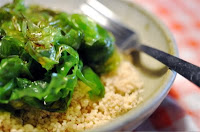 Dear Readers: I'm pleased to announce that my book, Fat of the Land: Adventures of a 21st Century Forager, is now available at a bookseller near you, including Amazon, Barnes & Noble, Powell's, and many independent bookstores across the land.
Dear Readers: I'm pleased to announce that my book, Fat of the Land: Adventures of a 21st Century Forager, is now available at a bookseller near you, including Amazon, Barnes & Noble, Powell's, and many independent bookstores across the land.So, what can I tell you about it? The book is 15 chapters, plus an introduction, arranged according to season, with each chapter focusing on a specific group of wild foods and ending with a recipe. Regular readers of this blog might recognize a situation or two, but 99 percent of the content has not appeared here. The book examines the settings, natural history, and culinary lore in greater detail, not to mention the characters doing the foraging. And it's funnier, I've been told.
Here's what the jacket blurbs say:
“Smart, funny, and hugely knowledgeable, Langdon Cook is a walking field guide and a gifted storyteller. Fat of the Land is a welcome kick in the pants to get outside and start foraging for our suppers.” —Molly Wizenberg, author of A Homemade Life: Stories and Recipes From My Kitchen Table
“Langdon Cook understands that the goal of hunting and foraging is not just to eat, but to eat well. Any city-eater can grab something at a supermarket, but to feel the thrill of grappling with lingcod or plucking dubious mushrooms gives the reader maximum pleasure—and zero pain. Provided you follow Cook’s recipes to satiate your whetted appetite. As a forager with a well-trained palate, Cook knows best.” —Betty Fussell, author of My Kitchen Wars and Raising Steaks: The Life & Times of American Beef
“Langdon Cook celebrates the bounty of the land and sea through the pleasure of foraging. It’s an inspiration and a reminder that eating your local foods connects you to the land you live on.” —Maria Hines, Chef/Owner, Tilth Restaurant
“In Fat of the Land, Langdon Cook invites us to share in his enthusiastic, salubrious, wild food foraging quests. Get out of town, breathe in the fresh air, hear the quiet, exercise, feel good, connect with nature and the season—then return to the kitchen to delicious preparations of dandelion greens, squid, fiddleheads, or whatever the quarry. Lively, informative, soul-satisfying narrative.” —Jon Rowley, Contributing Editor, Gourmet
The next few months will be a whirlwind as I hit the road in promotion of the book. Check back here periodically to see what events and readings are on tap and whether I'll be in a town near you. For Seattle and Portland area readers, here's a quick roundup of kick-off events for early September:
- Sept. 8: Puget Sound Mycological Society, monthly membership meeting, Seattle
- Sept. 10-11: Pacific Northwest Booksellers Association, Fall Tradeshow, Portland
- Sept. 14: Cooks & Books series, Lark Restaurant, Seattle
- Sept. 15: Tilikum Cafe, sponsored by Chefs Collaborative, Seattle
Thanks for your support and I hope you enjoy the book!







































